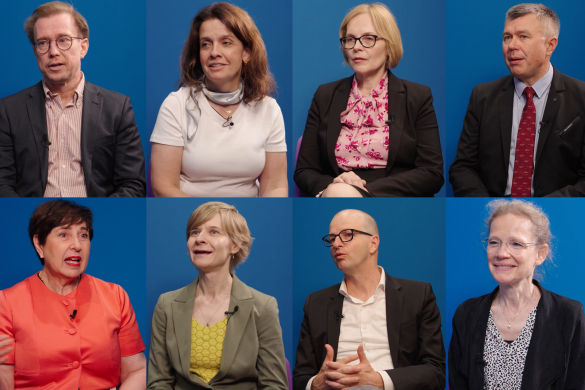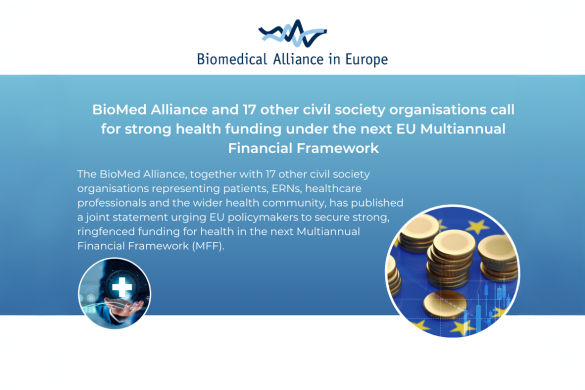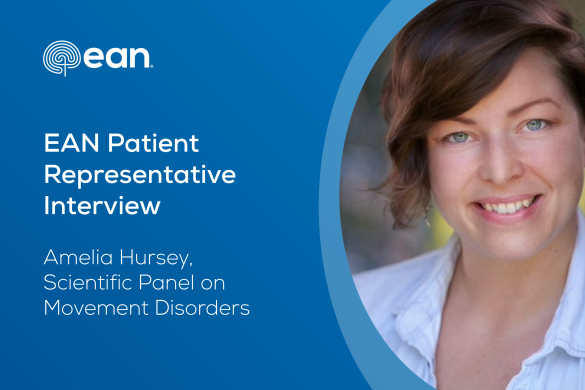As it has done globally for the past 18 months, COVID-19 attracted plenty of attention on Saturday, in the first Special Session of EAN 2021, as experts from a range of backgrounds addressed the impact and outcomes of the pandemic from a variety of perspectives.
Impact on patients was a common theme of the first three talks. Johann Sellner got the session started by examining the impact of the virus on people with chronic neurological disease. His presentations neatly addressed three simple questions: do people with chronic neurological diseases have a higher chance of catching COVID-19? Do those people suffer more severely? And does COVID-19 infection affect the course of disease for such people?
Donna Walsh, Executive Director of the European Federation of Neurological Associations, delivered the second talk, presenting ‘The Patient’s perspective: analysis of the EFNA-EAN survey’. The survey in question aimed to understand the impact of COVID-19 on patients and provide some recommendations to be followed up in the post-pandemic recovery planning. Results included 45% of respondents reporting that their care during the pandemic was not appropriate, mainly due to delayed or unavailable care. Medicine and drug shortages, as well as location and timing issues due to circumstances such as lockdown rules, all contributed to widespread alterations in patients’ usual care provision. Overall, respondents’ views about changes in approaches to care tended to vary, but with significant proportions reporting a feeling that their needs had not been taken into account. Walsh wrapped up her talk with a number of recommendations to help ensuree neurology patients receive the information, consideration and care they require.
Marialuisa Zedde followed this up with a close look at the disruption of neurological patient care during the pandemic, with particular focus on stroke. She presented some interesting statistics on decreases in hospital admissions for cerebrovascular emergencies, with a simultaneous increase in cryptogenic strokes involving younger patients with COVID-19. Decreases in presentations of patients with stroke can be attributed to quite a variety of factors, including a reluctance on the part of milder stroke sufferers to expose themselves to the virus by attending an emergency department; a potentially significant number of strokes being missed due to a lack of human contact, and of course the reallocation of resources and medical personnel away from healthcare locations that would usually serve cerebrovascular emergencies.
EAN Secretary General, Elena Moro provided the fourth talk of the session, moving onto ‘Neurological side effects of SARS-CoV-2 vaccination’. First giving an overview of the different most commonly used vaccines, she then moved on to the main systemic and local side effects reported in randomised clinical trials, including neurological side effects like fatigue, headache, myalgia, and Bell’s palsy. A significant portion of her talk then focused on the various reported cases of thrombosis as side effects of particular vaccines, explaining the pathogenesis of Thrombotic Thrombocytopenia Syndrome and discussing studies that have followed this up. In her summary, Moro stated that although mild neurological side effects immediately after SARS-CoV-2 are relatively common, severe neurological complications are rare, but full understanding of some side effects is still lacking and international cooperation to collect proper data is essential.
Finally, ‘the impact of COVID-19 pandemic on neurology residents and research fellows in Europe’ was the subject addressed by Giovanni Di Liberto, Past President of the EAN Residents & Research Fellows Section. Di Liberto described residents as the backbone of medical systems throughout the world before giving a detailed picture of the effect of COVID-19 on neurology residents’ clinical practice, based on data from three surveys. The most dramatic impact according to Di Liberto’s data was very clearly the widespread suspension or reduction of educational activities, closely followed by a huge drop in research activities, and a significant shortfall in the time devoted to neurological patients. Generally, and understandably, a large majority of neurology residents reported that the pandemic had negatively impacted their neurology training. Di Liberto rounded off the session on a positive note, with some tips for building resilience to COVID-19 and future pandemics.













